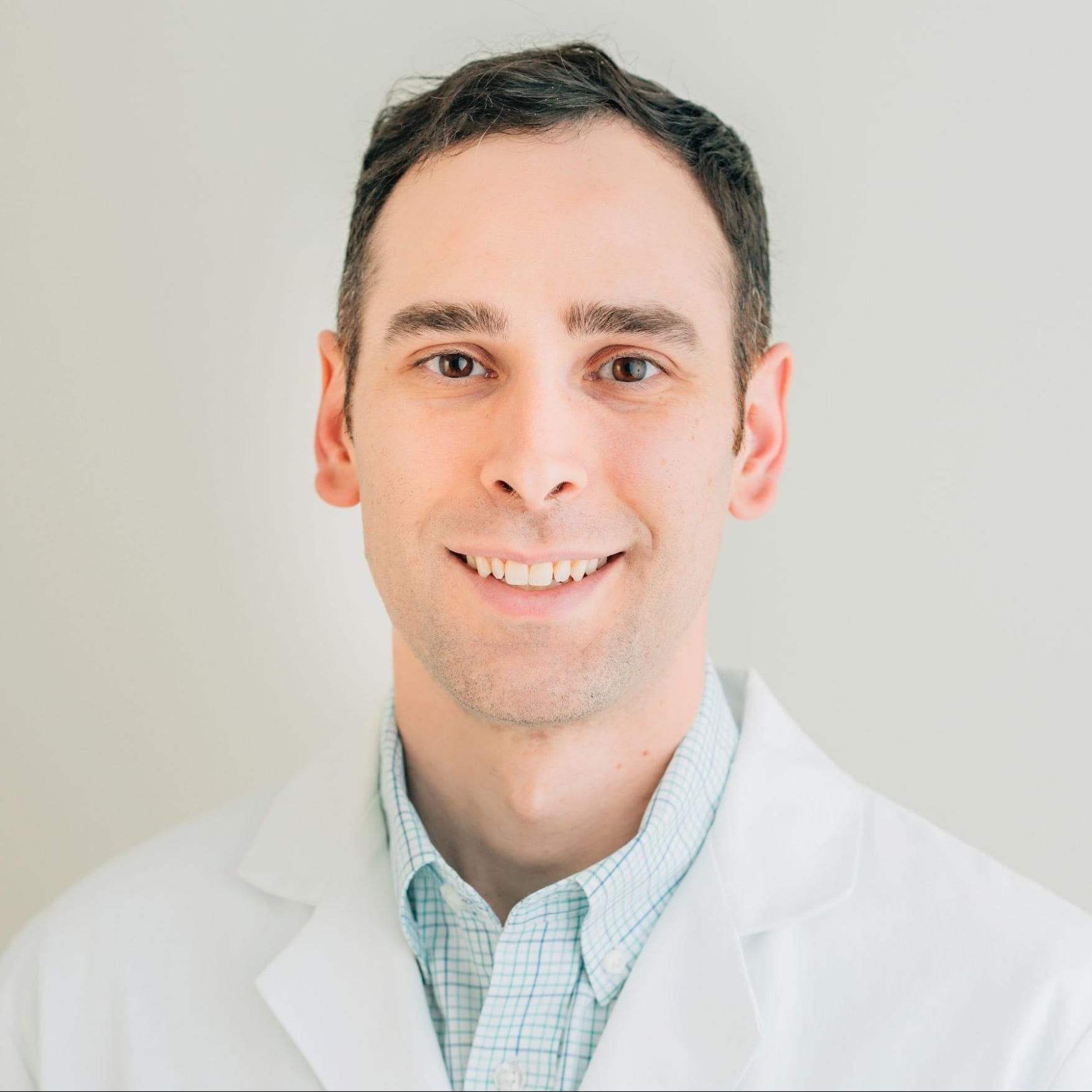Content
Over 90% of users saw increased regrowth or reduced hair loss in clinical trials
Hair Transplant Death Rate: Understanding Complications and Reducing Risk

Can you die from a hair transplant? If so, what’s the hair transplant death rate?
It’s scary to think about, but these questions cross the minds of almost everyone considering hair restoration surgery. Hair transplants, while generally considered safe and effective, aren’t without risks.
In rare cases, serious complications can lead to severe outcomes, including death. However, we’ll say it upfront: Death as a result of a hair transplant is extremely rare and has never been documented in medical literature (though it has gotten some media attention).
Understanding the potential causes of hair transplant complications — including surgical errors (primarily by unqualified surgeons) and undisclosed underlying medical conditions — is crucial for those considering this procedure.
Here, we’ll cover the hair transplant death rate, other complications of hair transplants, and what you can do to reduce risks if you go through with the procedure.
Content
Can a Hair Transplant Be Fatal?
A hair transplant is very unlikely to be fatal. It’s true that any surgical procedure could have complications that end up being fatal, but in the case of hair transplantation, it wouldn’t be because of the nature of the procedure.
To explain this better, here’s a quick refresher on how hair transplants work:
A hair transplant is a medical procedure that relocates hair from areas of the scalp unaffected by male pattern baldness (androgenetic alopecia) to areas with thinning or bald spots.
Typically, donor hair and hair follicles are taken from the back of the scalp (known as the donor area) and transplanted to the front, top, or other thinning areas.
A hair transplant is a cosmetic procedure, but it’s also a surgery, and all surgical procedures carry risks.
more hair... there's a pill for that
Can You Die From a Hair Transplant?
Some research indicates that “no case report of death because of hair transplantation complications is available.” That said, a few cases of death after hair transplantation have been reported in the media.
So, what happened in these apparent hair transplant deaths? Here are two we found:
In one media-reported hair transplant death, the surgery was performed by an unqualified healthcare professional in a setting that didn’t have a license for hair transplants (instead, it was licensed to cut hair).
In another reported death, the hair transplant patient requested 9,000 hair grafts — far more than the typical maximum of 4,000. (Wondering how many hair grafts you need? Our guide has insight.)
Hair transplants can have side effects and complications. But the hair transplant death rate is virtually zero, especially when performed by qualified surgeons at reputable, licensed hair transplant clinics.
Hair Transplant Complications
Though death from a hair transplant is very rare, there are other, more common side effects and complications of hair transplants to be aware of.
Research from 2018 lists intraoperative complications of hair transplants (those that happen during the procedure) and post-operative complications that happen afterward.
Intraoperative complications of hair transplants may include:
Bleeding
Tachycardia
Syncope (fainting)
Pain
Post-operative hair transplant complications can include:
Infection
Pain
Itching
Edema (swelling)
But these are only potential adverse effects. Many people experience no complications with hair transplants.
Many people wonder if a hair transplant is 100 percent safe. While it’s important to understand that any surgical procedure carries some level of risk, the chance of death from a hair transplant is incredibly low.
We’ll outline some risk factors for hair transplant complications, including death.
Anesthesia Risks
The primary risk associated with hair transplant surgery is related to anesthesia, but this risk isn’t specific to hair transplants. An allergic reaction is possible in any procedure requiring general or local anesthesia.
According to the American Society of Anesthesiologists (ASA), the estimated risk of dying from anesthesia is about one in every 200,000 to 300,000 cases.
Surgical Complications
Although rare, complications like severe infection or excessive bleeding can occur with transplanted hair. Reputable surgeons and clinics will have practices in place to minimize these risks.
Follicular unit transplantation (FUT) and follicular unit extraction (FUE) hair transplants are different procedures. However, they carry similar risks, from the more severe necrosis (when tissue dies) to benign hiccups.
Learn more about FUT versus FUE hair transplants in our guide.
Certain Underlying Health Conditions
Certain medical conditions increase the risk of complications from plastic surgery and other procedures. These include:
Diabetes. Unmanaged diabetes may impair wound healing and increase the risk of infections post-surgery.
Respiratory issues. Respiratory conditions like chronic obstructive pulmonary disease (COPD), asthma, and other respiratory conditions can complicate anesthesia and increase the risk of breathing issues during and after the procedure.
Obesity. Obesity can increase the risk of complications such as poor wound healing, infections, and anesthesia-related issues. Carrying excess body weight can also make surgery itself more challenging.
Cardiovascular issues. Cardiovascular diseases like hypertension (high blood pressure) and coronary artery disease can complicate the anesthesia process and increase the risk of cardiac events during surgery.
Research suggests that all patients, particularly those over 40, should have an electrocardiogram (EKG) and physician assessment for anesthesia fitness before getting a hair transplant.
Researchers also recommend healthcare providers monitor blood pressure, heart rate, and other vitals during anesthesia administration and throughout the procedure.
Fortunately, you don’t just have to hope for the best — there are tangible things you can do to minimize the risk of experiencing hair transplant complications or death.
Go With a Reputable Surgeon
Plastic surgeons and dermatologists are trained to mitigate hair transplant risks, so it’s important to find one who’s highly qualified and experienced.
Go with a board-certified surgeon with extensive experience in hair transplant procedures. Check their credentials, patient reviews, and before-and-after photos of previous hair transplants.
Be Honest With Your Surgeon
When explaining your medical history to a hair transplant surgeon, it’s essential to go into as much detail as possible.
Note any medications you’re taking, all current and previous health conditions, and whether you’ve had surgical complications or reactions to general or local anesthesia in the past.
Ask Your Surgeon Questions
You should feel empowered to ask about your surgeon’s training and what steps they’ll take to ensure your safety — like how they monitor vitals during the procedure and what would happen in an emergency.
Compare Costs
If the cost of a hair transplant seems too good to be true, it is. Hair transplants are expensive (the national average is right around $13,000), and there’s really no way to get around that.
If the cost of the hair transplant surgery seems low, it could mean the surgeon isn’t qualified or that the procedure isn’t being performed in a properly licensed medical facility.
Be Diligent About Post-Operative Care
Your healthcare provider will give you step-by-step instructions about how to care for your scalp after a hair transplant. This includes things like:
Keeping the surgical area clean
Taking prescribed medications
Avoiding strenuous activities
Going to follow-up appointments
You’ll also want to stay hydrated and be vigilant about any signs of complications, including swelling, bleeding, pain, or infection. Contact your surgeon immediately if you’re having any adverse reactions.
You can learn more about aftercare in our guide to hair transplant recovery.
new hair or your money back
A hair transplant is a reliable, long-lasting way to combat male pattern baldness or fix the look of a receding hairline. Though hair loss can certainly be distressing to some, no one needs a hair transplant. So it’s essential to be aware of any and all risks before committing to cosmetic surgery.
Hair transplants aren’t thought of as life-threatening procedures, as the incidence of death is nearly zero. But there are a few disclaimers.
Here’s what to keep in mind about hair transplant death rates:
Fatalities are extremely rare. Hair transplants are generally safe and effective, with the death rate being virtually zero when performed by qualified surgeons in reputable clinics. Although some deaths have been reported in the media, these cases often involve unqualified practitioners or other unusual circumstances.
There are potential risks and complications. While death is highly unlikely, hair transplants do carry risks similar to other surgeries, including bleeding, infection, and anesthesia complications. These risks can be mitigated by choosing an experienced, board-certified surgeon and following post-op care instructions diligently.
You can lower your risk. You can reduce your risk of complications from a hair transplant by being honest and open about medications and medical history. Also, be diligent about choosing a board-certified doctor, and carefully follow post-operative care.
To learn more about hair transplants, check out our guides to NeoGraft and synthetic hair transplants.
Other, less risky treatments for hair loss are available, like FDA-approved finasteride and minoxidil.
Ready to take the next step in your hair growth journey? Get a hair loss treatment tailored to your needs with our online hair loss consultation and guidance from a licensed healthcare provider.
This article is for informational purposes only and does not constitute medical advice. The information contained herein is not a substitute for and should never be relied upon for professional medical advice. Always talk to your doctor about the risks and benefits of any treatment. Learn more about our editorial standards here.
7 Sources
- American Society of Anesthesiologists (ASA). (n.d.). Obesity. https://www.asahq.org/madeforthismoment/preparing-for-surgery/risks/obesity/
- Anesthesia Patient Safety Foundation (APSF). (n.d.). What is the risk of dying from anesthesia?. https://www.apsf.org/patient-guide/what-is-the-risk-of-dying-from-anesthesia/
- Dasari N, et al. (2021). Updates in diabetic wound healing, inflammation, and scarring. https://www.ncbi.nlm.nih.gov/pmc/articles/PMC8432997
- Duggappa DR, et al. (2015). Anesthesia for patient with chronic obstructive pulmonary disease. https://www.ncbi.nlm.nih.gov/pmc/articles/PMC4613404/
- Ji JY, et al. (2024). Coronary artery occlusion with sharp blood pressure drop during general anesthesia induction: a case report. https://www.mdpi.com/1648-9144/60/2/232
- Kerure AS, et al. (2018). Complications in hair transplantation. https://www.ncbi.nlm.nih.gov/pmc/articles/PMC6371733/
- Knoedler L, et al. (2023). Hair transplantation in the United States: a population-based survey of female and male pattern baldness. https://www.ncbi.nlm.nih.gov/pmc/articles/PMC10642908/
Editorial Standards
Hims & Hers has strict sourcing guidelines to ensure our content is accurate and current. We rely on peer-reviewed studies, academic research institutions, and medical associations. We strive to use primary sources and refrain from using tertiary references. See a mistake? Let us know at blog@forhims.com!
This article is for informational purposes only and does not constitute medical advice. The information contained herein is not a substitute for and should never be relied upon for professional medical advice. Always talk to your doctor about the risks and benefits of any treatment. Learn more about our editorial standards here.
Knox Beasley, MD
Dr. Knox Beasley is a board certified dermatologist specializing in hair loss. He completed his undergraduate studies at the United States Military Academy at West Point, NY, and subsequently attended medical school at Tulane University School of Medicine in New Orleans, LA.
Dr. Beasley first began doing telemedicine during his dermatology residency in 2013 with the military, helping to diagnose dermatologic conditions in soldiers all over the world.
Dr. Beasley is board certified by the American Board of Dermatology, and is a Fellow of the American Academy of Dermatology.
Originally from Nashville, TN, Dr. Beasley currently lives in North Carolina and enjoys spending time outdoors (with sunscreen of course) with his wife and two children in his spare time.
Education
Bachelor of Science, Life Sciences. United States Military Academy.
Doctor of Medicine. Tulane University School of Medicine
Training
Dermatology Residency. San Antonio Uniformed Services Health Education Consortium
Certifications
Board Certified. American Board of Dermatology
Publications
Wilson, L. M., Beasley, K. J., Sorrells, T. C., & Johnson, V. V. (2017). Congenital neurocristic cutaneous hamartoma with poliosis: A case report. Journal of cutaneous pathology, 44(11), 974–977. https://onlinelibrary.wiley.com/doi/10.1111/cup.13027
Banta, J., Beasley, K., Kobayashi, T., & Rohena, L. (2016). Encephalocraniocutaneous lipomatosis (Haberland syndrome): A mild case with bilateral cutaneous and ocular involvement. JAAD case reports, 2(2), 150–152. https://www.ncbi.nlm.nih.gov/pmc/articles/PMC4867906/
Patterson, A. T., Beasley, K. J., & Kobayashi, T. T. (2016). Fibroelastolytic papulosis: histopathologic confirmation of disease spectrum variants in a single case. Journal of cutaneous pathology, 43(2), 142–147. https://onlinelibrary.wiley.com/doi/10.1111/cup.12569
Beasley, K., Panach, K., & Dominguez, A. R. (2016). Disseminated Candida tropicalis presenting with Ecthyma-Gangrenosum-like Lesions. Dermatology online journal, 22(1), 13030/qt7vg4n68j. https://pubmed.ncbi.nlm.nih.gov/26990472/
Kimes, K., Beasley, K., & Dalton, S. R. (2015). Eruptive milia and comedones during treatment with dovitinib. Dermatology online journal, 21(9), 13030/qt8kw141mb. https://pubmed.ncbi.nlm.nih.gov/26437285/
Miladi, A., Thomas, B. C., Beasley, K., & Meyerle, J. (2015). Angioimmunoblastic t-cell lymphoma presenting as purpura fulminans. Cutis, 95(2), 113–115. https://pubmed.ncbi.nlm.nih.gov/25750965/
Beasley K, Dai JM, Brown P, Lenz B, Hivnor CM. (2013). Ablative Fractional Versus Nonablative Fractional Lasers – Where Are We and How Do We Compare Differing Products?. Curr Dermatol Rep, 2, 135–143. https://idp.springer.com/authorize?response_type=cookie&client_id=springerlink&redirect_uri=https%3A%2F%2Flink.springer.com%2Farticle%2F10.1007%2Fs13671-013-0043-0
Siami P, Beasley K, Woolen S, Zahn J. (2012). A retrospective study evaluating the efficacy and tolerability of intra-abdominal once-yearly histrelin acetate subcutaneous implant in patients with advanced prostate cancer. UroToday Int J, June 5(3), art 26. https://www.urotoday.com/volume-5-2012/vol-5-issue-3/51132-a-retrospective-study-evaluating-the-efficacy-and-tolerability-of-intra-abdominal-once-yearly-histrelin-acetate-subcutaneous-implants-in-patients-with-advanced-prostate-cancer.html
Siami P, Beasley K. (2012). Dutasteride with As-Needed Tamsulosin in Men at Risk of Benign Prostate Hypertrophy Progression. UroToday Int J, Feb 5(1), art 93. https://www.urotoday.com/volume-5-2012/vol-5-issue-1/48691-dutasteride-with-as-needed-tamsulosin-in-men-at-risk-of-benign-prostatic-hypertrophy-progression.html





